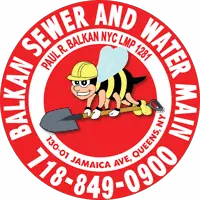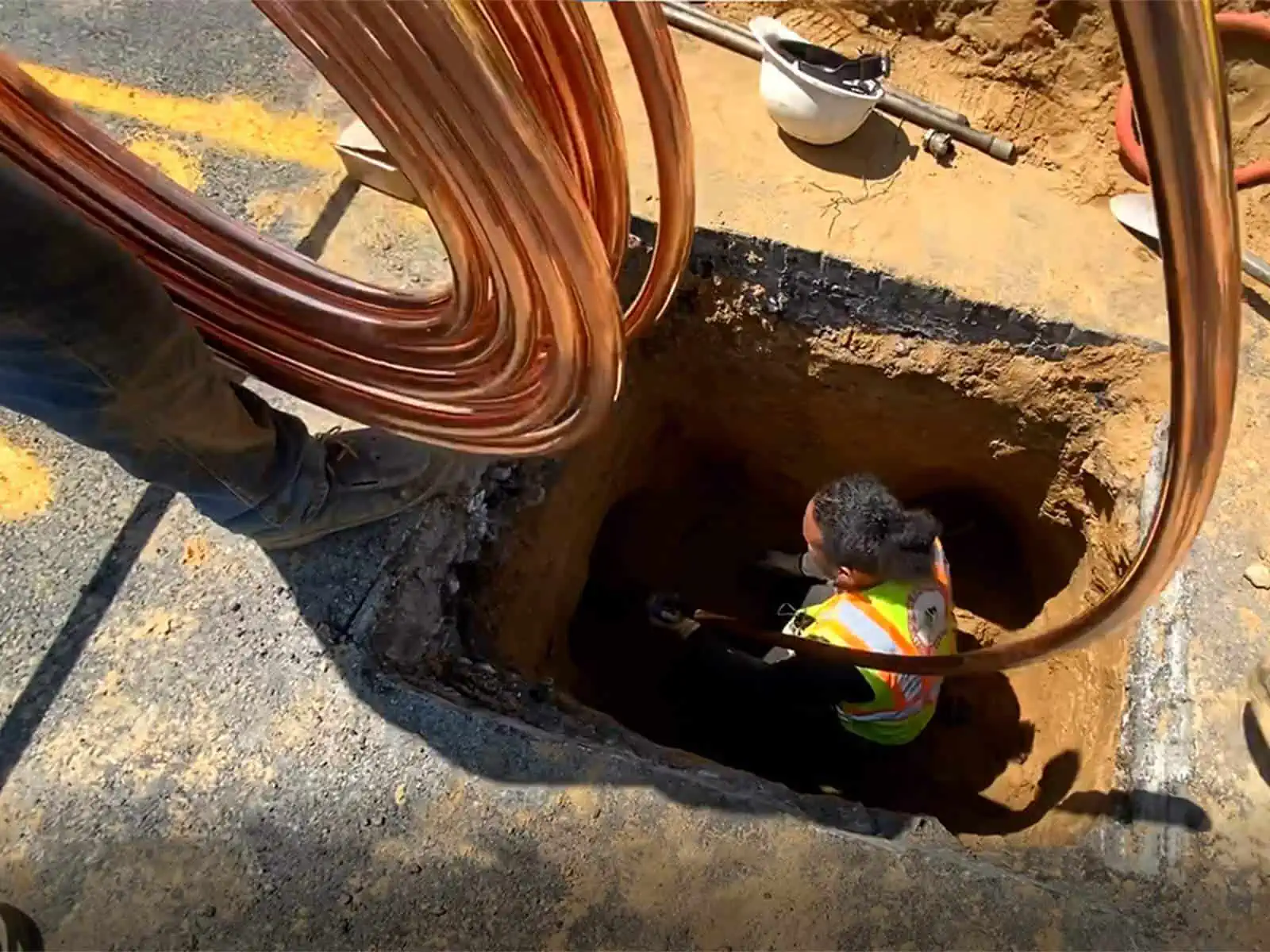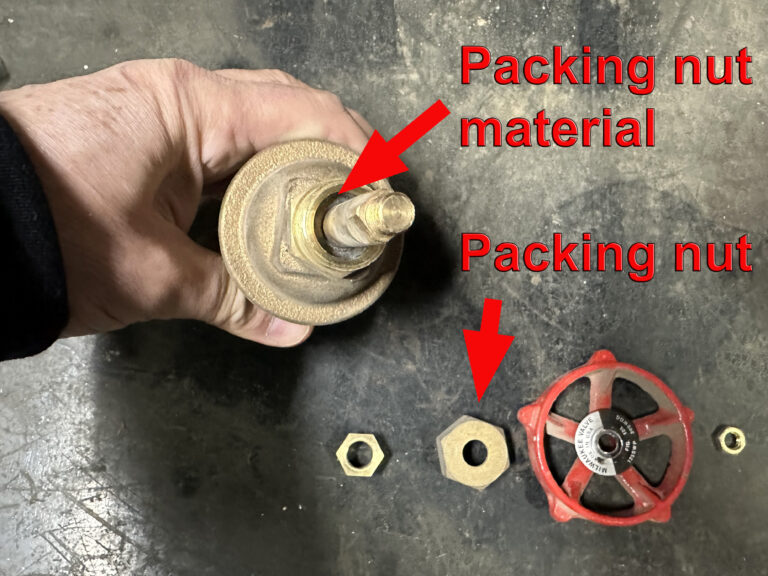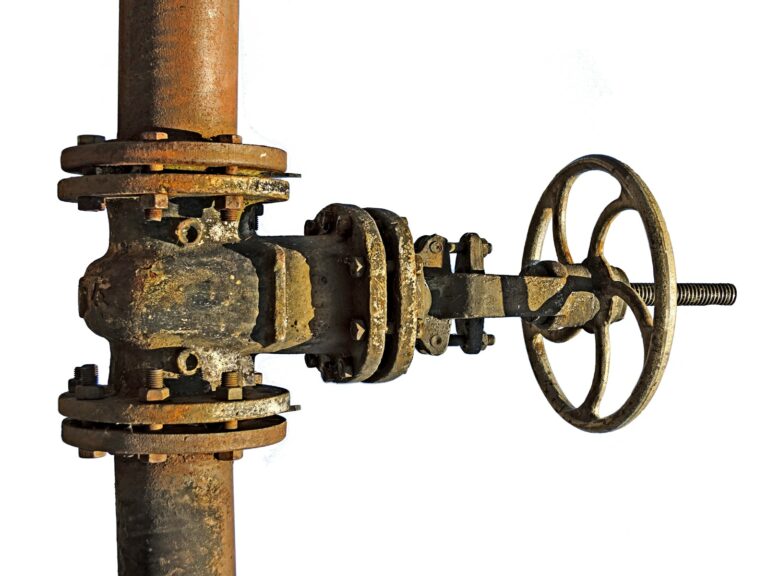Basic knowledge of how your water supply line (also known as a cold water supply line) works, approved materials, and potential issues is paramount. This is especially true if you’re a home or property owner. Mastering the basic understanding of your water supply line will help you detect any problems. It will also help you to deal with emergencies related to plumbing water supply lines competently.
Every property has a water supply line, also known as a water service line. As a homeowner, it’s essential to know the basics about this part of the plumbing system. So, whether you’re a commercial or residential property owner or just a homeowner, here are the basics you need to know about them.
What is a Water Supply Line?
A water supply line is the main water line that allows water to enter your property. Your water supply line is connected directly to the public main water distribution line, typically located under the roadway. Each service line should have its own individual tap connection on the public main. It directs water to your house, has a metering device, and then branches to faucets, toilets, showers, and home appliances such as washing machines and water heaters.
Equipment that facilitates water distribution and delivery includes water pipes, service valves and fittings, and faucets. The fittings and pipes are mostly made of copper, brass, plastics, or galvanized iron. These water lines typically range in size from 3/4” to 4″ in diameter, and are connected to the main supply line. Faucets and valves control the water flow for each plumbing fixture.
The main line immediately leads to water ready for cold water use. There’s an additional step for hot water. It’s where the water supply leads to the water heater, leading to water taps, showers, and other hot-water appliances in the house. In addition, your property is likely to have freshwater lines leading to the outdoor faucet (tap) to supply water to your garden and lawn.
How the Water Supply Line Runs Inside the House
Once inside the house, the main water supply line/pipe supplies all plumbing fixtures, and likewise supplies water for your water heater. However, after the water connects to the water heater, the main water supply line splits into hot and cold water pipe paths – referred to as the cold and hot service lines.
In most cases, both hot and cold water pipes travel in pairs, directed to various rooms, and the corresponding plumbing fixtures in those rooms. In newer houses, unlike the older ones, the supply lines from the water heater are separate. This means that water use at one point doesn’t affect its supply in another area or room. For instance, when a toilet is flushed, the pressure of the cold water that supplies the shower is not lessened. This allows sudden heating of the shower water, which is very convenient.
The cold-water line splits away from the main water supply line and slopes away from the water heater. The cold-water supply pipes are installed in straight lines. This is to facilitate easy water movement into their respective areas in the house. The more bends there are in water supply lines, the more resistance to the flow of water there is.
The water heater follows a different line from the cold water piping supply line. The water in the tank is heated. After which the water heater releases the water into different hot water service lines. Of course paramount to all of the above, is that all of the water lines are sized properly. Every plumbing fixture is allotted a fixture count. Plumbing fixture counts allow for design professionals to size every part of your water supply system out properly and adequately.
Materials Used For Installing a Water Supply Line
There are varieties of water line materials and pipes that supply water. Large-diameter pipes supply water for an entire town or city, which are called distribution mains. Typically taps for service lines are not permitted on distribution mains. The smaller branch water pipes supplying individual buildings are known as water service lines.
Commonly used materials in water supply pipes include copper, ductile iron, and brass. Plastic pipes such as plasticized PVC (polyvinyl chloride), steel, or cast iron are not permitted as service line material in NYC.
Pipes that are cement lined, such as ductile iron, are the most durable and robust compared to other water supply pipes. Ductile iron pipe is actually what NYC uses as the material for its water distribution system. However, these cement-lined pipes are difficult and expensive to install because they are heavyweight. On the other hand, steel pipes are the strongest. In contrast, polyvinyl chloride pipes are much lighter and easier to install. This makes them suitable for particularly far and challenging areas to access.
There are various types of plumbing pipes used in water supply lines in homes. However, to restate it again, the water service line materials approved in NYC include K copper, brass pipes, and ductile iron pipes. Water pipes made from plastic materials are not legal for use in NYC. Check out our detailed tutorial on the main water pipe materials approved in NYC.
Factors to Consider Concerning Your Water Supply Line Installation
Installation costs, in the form of labor, are the central part of the water supply project’s total costs. Labor costs also vary depending on the choice of the pipe material:
- Strength — The strength of a water pipe or line significantly impacts how long the service line will last. For instance, K copper is a malleable material, therefore it withstands ground settlement to a large degree. Typically there are bends at both points of the connection to create slack in the line itself.
- Pipe weight — Lightweight pipes such as K copper can be handled faster and easier during installation than pipes with a heavy weight, such as brass or ductile iron. For instance, brass pipe has to be specially cut and then threaded
- Easy assembling — It’s faster and easier to assemble pipes with push-on joints, as compared to mechanical joints. Flaring K copper and assembling the joints is easier still.
Common Problems in Water Supply Lines
The water supply line that brings water to your home is essential. Daily tasks such as cooking and personal hygiene depend on water availability. That’s why it’s necessary to ensure a continuous and smooth supply of fresh water. You can achieve this by learning the common issues that might affect your water lines.
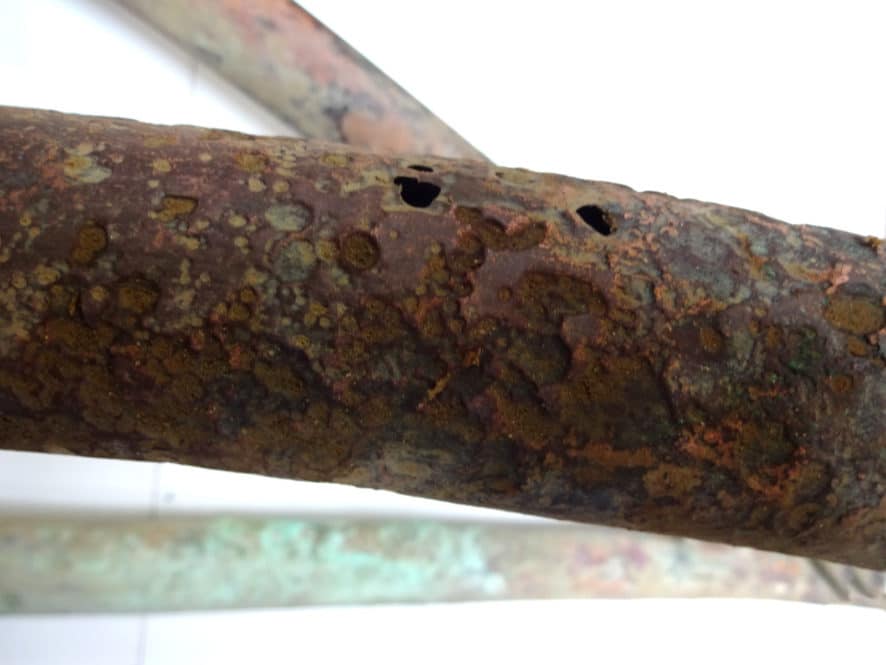
Among the two notable conditions are electrolysis, and acidic ground conditions. Each of the two can eat through a brand-new copper line in a year or so. Brass lines, due to being thicker walled pipe, take a longer period of time to fail due to electrolysis or acidic ground conditions.
It’s therefore essential for each property owner to master common problems related to water supply lines. There are several issues that affect their flow rate and water pressure. These may require immediate replacement or repair:
Water Line Leaks and Leak Testing
Leaks can occur anywhere along the water supply lines due to various reasons such as loose joints and pipe corrosion. They can cause a reduction of water pressure and should therefore be repaired as soon as possible. Another increasingly more common issue is pipe failure due to electrolysis. Electrolysis is a stray underground electrical current that attacks bare copper water lines. Stray underground electrical current can destroy a copper water line in less than 1 year.
Burst Water Pipes
These are the most paramount plumbing issues. Faced with burst pipes? The solution is to contact Balkan Sewer and Water Main team for your emergency services in NYC and get immediate help.
Noisy Pipes & Plumbing
Ever wondered what causes the loud noise in your water pipes? Well, more often, it’s always air when it finds its way into the water supply line. This is known as air hammer. Do you need to replace your main water line? The quick answer is no. As previously stated, air in your lines can cause water hammer, which must be attended to. However, water hammer arresters can be easily installed by a plumber. For added information and tips review our main water line replacement guide.
The water supply system in your house may seem complex. After all, plumbing should be inconspicuous and convenient for home and property owners. Therefore, you must have knowledge about your water lines, from the definition to the common problems you might face. This knowledge will not only help detect problems but will also help you understand the dynamics, as well as deal with emergencies related to water supply lines in your home. Remember, knowledge is power when it comes to plumbing problems!
Expert Water Main Repair and Water Line Replacement
The Balkan Team provides expert home water main repair and main water line replacement. We have expertise in all types of NYC underground plumbing. Balkan Sewer And Water Main Service was founded in 1952. Since its inception, the foundation of the company has been based upon integrity and honesty in all of our dealings.
That solid foundation has enabled us to thrive in every economic climate. That is why guiding you through the decision of doing a sewer repair vs sewer replacement exemplifies our company culture of educating consumers. We feel the more you know, the better we’ll look. The year 2022 actually marked our 70th consecutive year in business under the same family guidance.
As we have grown, we have become increasingly dependent upon a “Team First” approach. What helps ensure a continuation of our high standards, overall integrity, and high company morale, is that same team approach.
Complete client satisfaction has always been the number one goal at Balkan Sewer And Water Main. That is why we are NYC’s largest and most trusted sewer and water main service in New York City. Simply put, if it’s plumbing, and it’s underground, we do it. For over 70 years, and for over 90,000 New Yorkers to date, Balkan is “The Team You Trust”.
